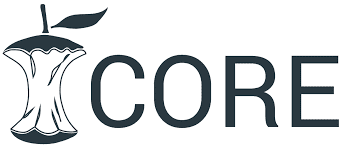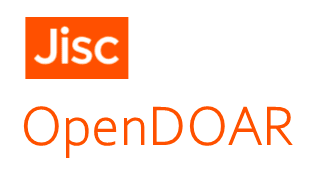| dc.creator | Baus Domínguez, María | es |
| dc.creator | Gómez-Díaz, R. | es |
| dc.creator | Gutiérrez Pérez, José Luis | es |
| dc.creator | Torres-Lagares, Daniel | es |
| dc.creator | Machuca-Portillo, Guillermo | es |
| dc.creator | Serrera Figallo, María de los Ángeles | es |
| dc.date.accessioned | 2023-11-23T14:46:38Z | |
| dc.date.available | 2023-11-23T14:46:38Z | |
| dc.date.issued | 2022-06-08 | |
| dc.identifier.citation | Baus Domínguez, M., Gómez-Díaz, R., Gutiérrez Pérez, J.L., Torres-Lagares, D., Machuca-Portillo, G. y Serrera Figallo, M.d.l.Á. (2022). Metallothioneins in dental implant treatment failure and periodontitis in patients with Down's syndrome: validation of results. GENES, 13 (6). https://doi.org/10.3390/genes13061028. | |
| dc.identifier.issn | 2073-4425 | es |
| dc.identifier.uri | https://hdl.handle.net/11441/151449 | |
| dc.description.abstract | Metallothioneins (MTs) are low molecular weight cysteine-rich proteins that can bind
up to seven zinc ions. Among their numerous functions, MTs appear to act as protectors against
oxidative and inflammatory injury. In our first published study, we reported downregulation of the
isoforms MT1B (fold distance (FD) −2. 95; p = 0.0024), MT1F (FD −1.72; p = 0.0276), MT1X (FD −3.09;
p = 0.0021), MT1H (FD −2.39; p = 0.0018), MT1M (FD −2.37; p = 0.0092), MT1L (FD −2. 55; p = 0.0048),
MT1E (FD −2.71; p = 0.0014), MT2A (FD −2.35; p = 0.0072), MT1G (FD −2.24; p = 0.0118), and MT1A
(FD −2.82; p = 0.0023) by comparing Down’s syndrome patients with periodontal disease and implant
failure to those without periodontal disease and with a positive progression of their implants. In
this gene validation study, we intended to verify the results of our first gene expression analysis.
Materials and Methods: In our retrospective case–control study, we performed retrotranscription
(RT-qPCR) of 11 RNA-to-cDNA samples using the SuperScript™ VILO™ kit (50; reference 1,176,605)
from Thermo Fisher. We conducted the study using the real-time PCR technique on the q-PCR ViiA
7 platform from Thermo Fisher. We chose the format of the Taqman Array Plate 16 Plus (reference
4,413,261) from Thermo Fisher, which accommodates 12 genes plus four controls (GAPDH, 18S, ACTB,
and HPRT1). We conducted the analysis of the plates using the Thermo Fisher Cloud Web Software.
Results: The results obtained through gene validation analysis show that in PD+RI+ patients, the
genes encoding the isoforms MT1F (FD 0.3; p = 0.039), MT1X (FD 338; p = 0.0078), MT1E (FD 307;
p = 0.0358), and MT2A (FD 252; p = 0.0428) continue to show downregulation, whereas MT1B (FD
2.75; p = 0.580), MT1H (FD 281; p = 0.152), MT1L (FD 354; p = 0.0965), and MT1G (FD 336; p = 0.0749)
no longer show statistically significant results. | es |
| dc.format | application/pdf | es |
| dc.format.extent | 11 p. | es |
| dc.language.iso | eng | es |
| dc.publisher | MDPI | es |
| dc.relation.ispartof | GENES, 13 (6). | |
| dc.rights | Atribución 4.0 Internacional | * |
| dc.rights.uri | http://creativecommons.org/licenses/by/4.0/ | * |
| dc.subject | Down’s syndrome | es |
| dc.subject | Periodontal disease | es |
| dc.subject | Bone biology | es |
| dc.subject | Clinical outcomes | es |
| dc.subject | Gene expression | es |
| dc.subject | Validation | es |
| dc.subject | Systemic disease | es |
| dc.title | Metallothioneins in dental implant treatment failure and periodontitis in patients with Down's syndrome: validation of results | es |
| dc.type | info:eu-repo/semantics/article | es |
| dcterms.identifier | https://ror.org/03yxnpp24 | |
| dc.type.version | info:eu-repo/semantics/publishedVersion | es |
| dc.rights.accessRights | info:eu-repo/semantics/openAccess | es |
| dc.contributor.affiliation | Universidad de Sevilla. Departamento de Estomatología | es |
| dc.relation.projectID | PI-0081-2016 | es |
| dc.relation.publisherversion | https://www.mdpi.com/2073-4425/13/6/1028 | es |
| dc.identifier.doi | 10.3390/genes13061028 | es |
| dc.journaltitle | GENES | es |
| dc.publication.volumen | 13 | es |
| dc.publication.issue | 6 | es |
| dc.contributor.funder | Consejería de Salud de la Junta de Andalucía (España) | es |
 Metallothioneins in dental implant treatment failure and periodontitis in patients with Down's syndrome: validation of results
Metallothioneins in dental implant treatment failure and periodontitis in patients with Down's syndrome: validation of results















